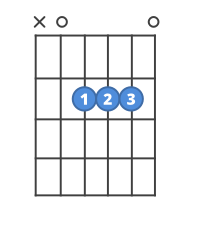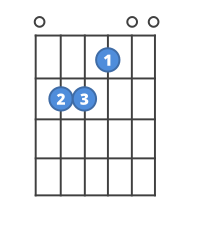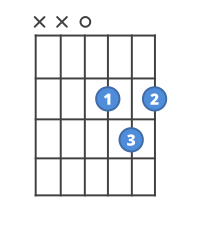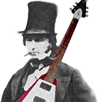




C.A.G.E.D
- CAGED is a system to help to visualize and navigate the fretboard in order to appreciate how chords, arpeggios and scales inter-relate with one another
- C.A.G.E.D stands for ‘C’, ‘A’, ‘G’, ‘E’ and ‘D’ chord and scale fingering shapes and patterns.
- Each of these open chords has a movable barre chord shape, the most common being the E shape barre chord
- For Example, an E shape barre chord’ at the first fret is an ‘F’ chord, and an E shape barre chord at the fifth fret is an ‘A’ chord.
- The root of the chord is on the 6th string.
- All common open chord shapes can be made into a barre (or movable) chord.
The CAGED system really comes into it’s own when applied to scales and arpeggios. Each of these 5 major chord shapes has a major scale which sits right under the chord shape. This can really help when learning where the major scales sit on the fingerboard. Here they are in the key of D maj. The numbered dots show the chord tones. The pink dots show where all the other D maj notes are on the fingerboard.
The system can be stretched further to find the pentatonic patterns too! The shapes and patterns below are also all in the key of Dmaj (or Bmin). Many guitarists tend to think of pentatonic scale patterns as minor but remember that each one also has a relative-major pentatonic with exactly the same notes.
Here’s how the 5 CAGED shapes relate to the blues scale positions. Remember the blues scale is just a pentatonic scale with an additional note -a flat 5th, or “blue note” signified here with a blue square.
The “positions” above I’ve identified (numbered) in terms of how they relate as minor pents/blues scales. Take a look at the diagram below to see how they all interconnect on the fingerboard.




